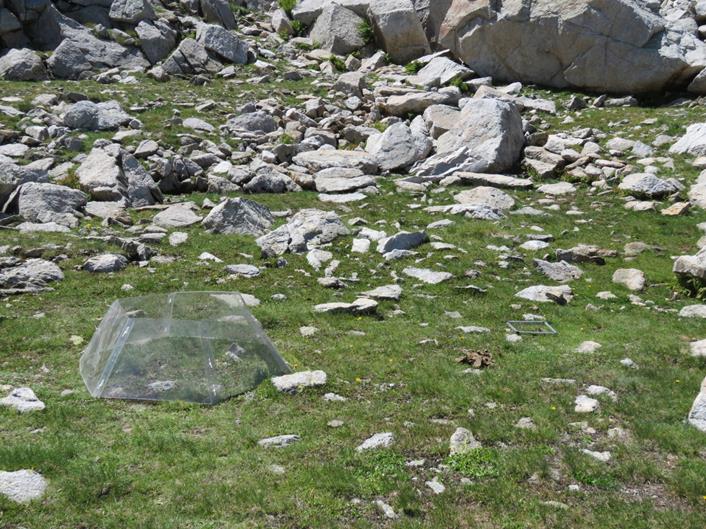An experiment with Open Top Chambers in four Pyrenean locations of snowfields
Within the POCTEFA FLORAPYR project, researchers of the University of Barcelona have coordinated the installation of passive heating devices known as Open Top Chambers (OTC) during the summer of 2017. These devices produce a slight temperature increase, which makes predictions possible on the short-medium term concerning the vegetation under study, in the context of current climate change. These OTC achieve a moderate over-heating in the surface of the soil and in the vegetation, with low influence on other atmospheric variables. In previous experiences in high mountain shrubby vegetation of the Catalan Pyrenees, the summer average in the increase of temperature has been between 1.1 ºC and 2.1 ºC. Its design, in the form of a pyramid trunk with a hexagonal base, is aimed to withstand different meteorological agents, such as winds and snowfall, and follow the specifications set in the International Tundra Experiments (ITEX), which have been carried out since more than 20 years in different Arctic and alpine habitats.
Within the current context of climate change, the snowbed plant specialists are the most directly threatened. Their habitat is the long-lasting snow environments of the high mountain, where neighboring grassland species are not competitive due to the brevity of the vegetative period. The predictions of a reduction of the precipitation and the duration of the snow will make these environments prone to be colonized by species of grassland or of wider distribution. With the installation of the OTC, we want to simulate the warming caused by climate change, in order to predict how will respond the vegetation as a whole, and the sub-shrub species Salix herbacea in particular, to the real increase in temperatures. With this purpose, the vegetation in each OTC and that found in control plots has been characterized at each study location. Also during the summer of 2018, we will collect samples of soil and plant material of Salix herbacea in order to elaborate an ecological and functional characterization in the initial moment of the experiment. Within a few years, samples will be obtained from inside and outside the OTC to evaluate possible differences due to the experimental warming, and to real climate change.
